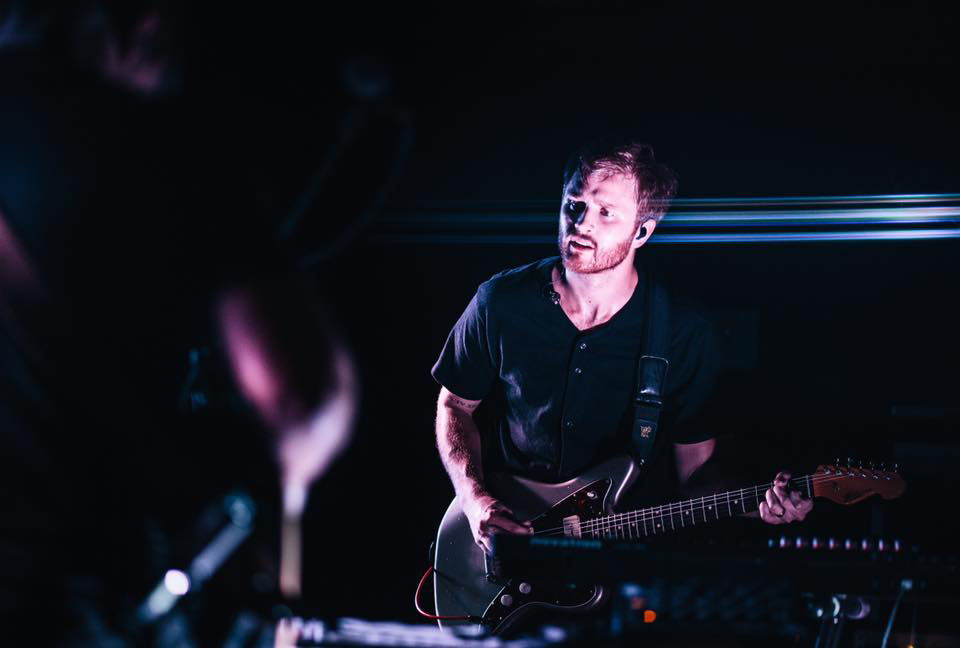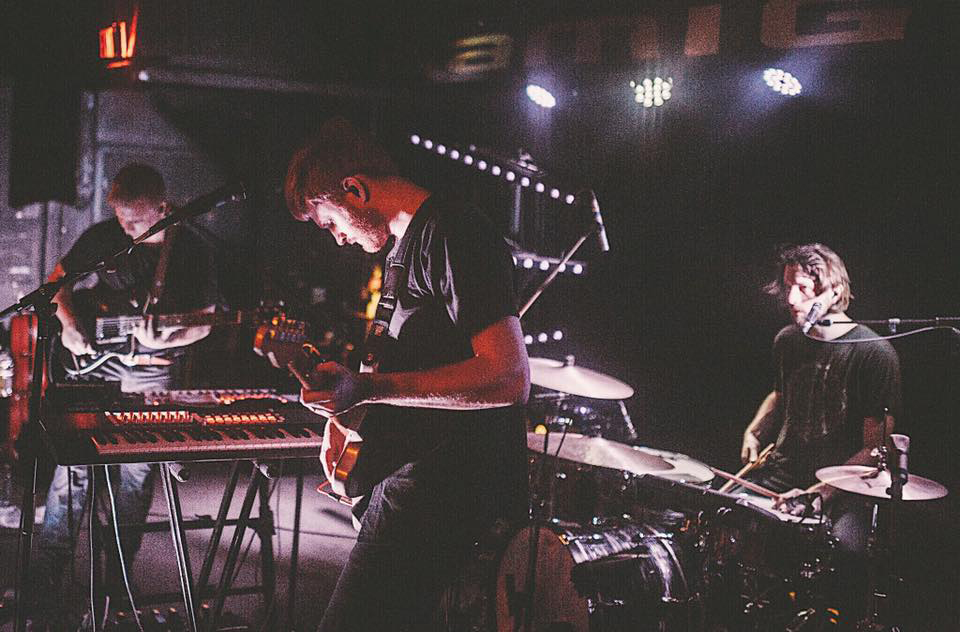“We’re making an album to be an album, not a collection of songs.”
How a young band addresses challenges head-on can directly affect whether they’re able to continue on a path to success, or crumble like a house of cards. Take Close Talker, a young group from Saskatchewan who also happen to have one the coolest band names in recent memory. Recently, they had to weather the storm of losing their bass player and needed to decide if they could carry on reconfigured as a trio instead.
Deciding to press forward as a three-piece, the revitalized band delivers aurally exciting angular, atmospheric tones on their sophomore album Lens
“When we recorded Flux, we were still discovering what lane we wanted the band to be in,” drummer Chris Morien told Digital Trends. “And there’s always this romanticism when you get into a studio: “’Oh man, look at all this cool gear! What can we try? Let’s put this here and do this, and then this…’ You want to try so many things because you have so many different ideas, but we didn’t know how to channel them properly.”
Continues Morien, “When I take a critical listen to Flux, I see parts of it that I want to give more space to. When we approached writing and recording Lens, we wanted every part included in each song to count. We looked at songs like, ‘Well, is it a song if you play it with an acoustic guitar and vocals?’ We were more focused on layering things and having each part contribute the right thing to each song.”
Lens looks to be the start of something big. Digital Trends called Morien during a tour stop in Wisconsin to discuss the band’s meticulous recording regimen, tapping into influences to become a better songwriter, and the value of shared listening sessions.
Digital Trends: It sounds to me like you guys were quite meticulous when you got back in the studio to record Lens. For one thing, I like the sense of space in the overall recording. It breathes somewhat more than Flux did.

Chris Morien: Thanks for noticing that. Throughout the whole recording process, we took a very intense way to find the right sounds for each song. We took a lot of time finding the right snare, the right kick drum, and the right cymbals. We wanted to make sure each one was exactly what we wanted. That was the overarching theme of the recording process. Maybe we didn’t work so well with our time management (laughs), but we did make sure to make an awesome end product.
On All of Us, it sounds like there’s a sort of in/out delay effect on your cymbals. Tell me how you achieved that.
There’s only a little bit of delay on All of Us — it’s actually all me. Like, the snare is doubled, so it was a little bit of a weird coordination thing. But that’s all me, man!
I love that! I think you and Stewart Copeland, the drummer of The Police, are spiritual brothers. Actually, there’s a bit of a Police vibe to what you guys do overall, because Matthew Kopperud’s guitar work is reminiscent of Andy Summers — the angular, chordal style that’s his trademark. You guys really have embraced the best aspects of the modern trio format here.
When our original bass player decided to move on, we had a transition period where we had to decide if we just wanted to go for the three-piece thing. This record is the first time we were writing songs as a three-piece, and not with a bass player in mind.
Now we’re trying to figure out how to do a lot of things, but still do them with three people. For our live show, we’ve picked up a lot of extra gear. Matt has a lot of extra pedals, including a bass pedal through a synth, and he also plays keyboards with his right hand. Our singer, Will [Quiring], also has a keyboard, so we’re all multitasking. There is a bit of a learning curve to still make it feel natural to be able to achieve all the sounds we want.
Well, there is another quite famous Canadian trio who did it all with just three guys handling everything onstage themselves, of course: Rush.
Yeah, and that’s why we call the bass pedals the Geddy Lee pedals! (both laugh)
That makes a lot of sense! Just their thought processes alone in figuring out how to do all that with only three guys is pretty impressive to think about.
Just to think of all that, yeah! So much of it is muscle memory. You’ve gotta just trust your body.
If anybody knows how to multitask with two hands and two feet, it’s gotta be you, right?
We’re all multitasking, so there’s a learning curve to make it feel natural for us to achieve all the sounds we want.
Oh yeah, totally. That’s been ingrained in me since I started playing drums, for sure.
And Matt’s so talented at what he does as well. His personality is, he likes to do a lot of things. He’s always busy, and he like to be on the go. I feel like we finally achieved something for him with Lens, where he can be completely occupied. (chuckles) He’s at full capacity, which I think he really enjoys.
He’s also taken on this awesome live persona, and it’s always a big talking point after we play a show: “How is that guy doing all these things?” It’s a really impressive thing to watch.
I look forward to seeing how you guys handle all of your onstage “duties.”
That’s what we’ve been working on the last couple of months — developing that full live sound: “OK, we love these songs and their arrangements. Now, how can we recreate this live as a three-piece and have the same kind of sound quality and atmosphere that we created on the record?”
Is there one example from Lens you consider the most challenging song to pull off live?
Yeah — Okay Hollywood. Our working title for that song was Really Hard. (both laugh) It actually has two drumbeats layered on top of it. The demo was a more complex beat and quite busy, with what you hear between the main drum hits.
I really love that beat, but when we got to the studio and were listening back to the demo, we were wondering if it was a solid enough groove and had enough of a pocket for people to get into. We really wanted this song to have a head-bobby feel to it, so on the spur of the moment, we decided to change the beat and make it more direct: “Here’s where the pocket is, and here’s where we want you to bob your head up and down.”
So we rolled with it, and then we sent it off to our mixer, Marcus Paquin. He had heard the demo before that and said, “Aw man, I miss those drums!” He wanted to mix them back in so it felt natural. I was there when he was mixing it, and he went, “You gotta check this out.” I listened to it, and went, “Holy shit! That’s so much better than what we had before!”
And now I was stuck with this predicament: How can I achieve these two beats at the same time and get the same feel, and also get the intricacy of the busier beat? I spent hours and hours relearning it to figure out how I could achieve it. That was the hardest one for us to figure out and get to feeling good, and now it’s easily our favorite song to play. It’s really sweet.
Who do you look up to from behind the kit as your drumming influences?
Well, growing up, obviously, I was big into Rush [and Neil Peart], and Foo Fighters was another favorite — Taylor Hawkins is amazing. I was really into rock music at first, but when I went into high school, drums took a back seat, and I switched to playing alto saxophone. I went into this whole jazz headspace, so a lot of my listening in my teenage years was awesome jazz legends and getting into sax players like Charlie Parker and Sonny Stitt.
Coming out of high school, I decided to pick up the drums again, and I think I brought forward more intricacy from jazz into my playing. When I write drum beats, I try not to approach them with the traditional rock beat. Most things I try to write are rooted in being a little more different. My approach in this band is to find new ways to create a pocket and fit in a space where you can really get into the groove, but also have some intricacy and make the beats unique.
That jazz background clearly helped your compositional skills.
Definitely. I really value that time — learning more about harmony and melody — and I’ve gotten more involved in songwriting beyond just coming up with the drum parts. I’m contributing what I can to chord progressions and the rest of the song composition.
Vinyl listening is more about going from start to finish, not just picking the highest-rated song to listen to.
By the way, I love that we have the option to listen to Lens on vinyl.
Me too. The back end of our tour van is weighted down with all of our vinyl! It’s pretty full with all of our merch, yeah.
I always like buying albums at live shows because I know the money is essentially going directly to you, the artist.
And we appreciate that, because it goes right to our breakfast fund! (both laugh) When I opened up the box for the first time and pulled out the first record, it hit me: “Oh, we actually made something.” It was a tangible, physical product at that point. It was always real, but that’s when it kind of hit me.
There is something different about holding that package in your hands. You have a special connection to it. I also think vinyl helps people become more careful listeners, because you also have to physically interact with it.
There is an intent to listen, yeah. It makes such a huge difference. When we got our test pressings back and were listening to them for the first time — to hear the sounds we’d been listening to and mixing in the studio, just going through the whole process to get to that finished quality — it was totally worth it.
Another thing I love about vinyl, or even CD, is there’s something about having a friend give his wholehearted recommendation for an album, and then just sitting there listening to all of it. It takes a little more time to get there, but it’s usually a higher-quality listening experience.
Shared listening experiences like that are special. They tend to stick with you.
Even a record that I love and listened to 100 times, you want to listen to it with a friend and go, “You gotta check this part out,” because you’re recognizing one thing they love.
Give me some examples of a few albums you did that with.
One of my favorite bands is Plants and Animals, from Montreal. They have a record called Parc Avenue (2008), which is about 10 years old. I remember my singer Will put that album on and went, “Check out this part.” I may have told him to check it out first, so for him to bring it back around like that took it to a whole new level.
I’d also have to say The National, High Violet (2010). That’s one of our favorite records as a band. We listen to music a lot in the van, and that one gets played all the time.
Vinyl listening is more about going from start to finish, not just picking the highest-rated song to listen to. We’re making an album to be an album, not a collection of songs. We present the album to you as a complete concept, and then we like to see what people do with it after that.






